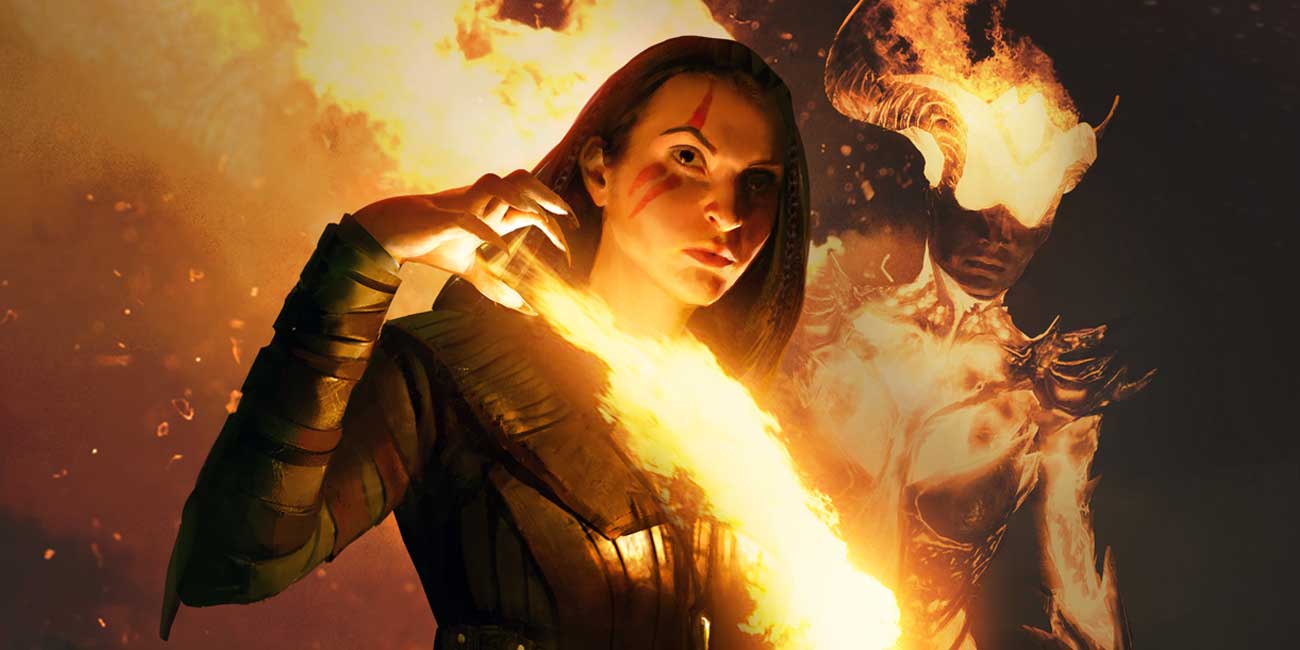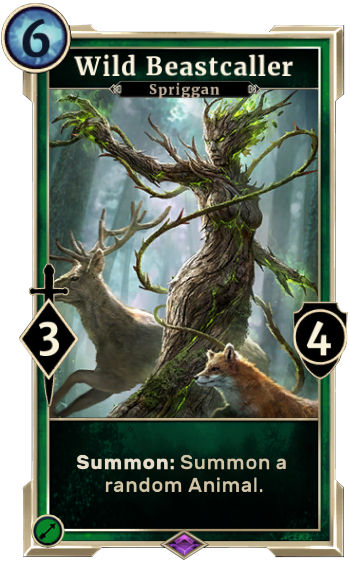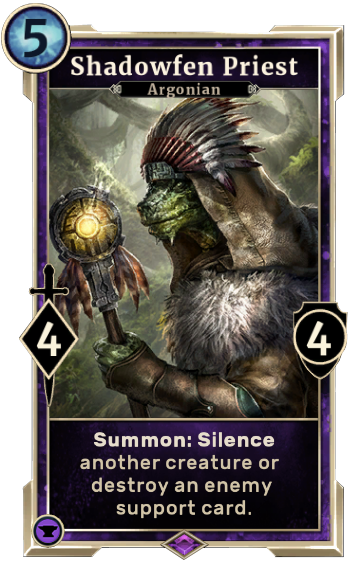
Since The Elder Scrolls: Legends went into open beta last week, a number of us on the team have jumped into Bethesda’s collectible card game to try our hands at climbing the ladder or making an all-Khajit deck work. (Pro tip: it doesn’t.) Though Legends will feel familiar to veterans of games like Magic: The Gathering and Hearthstone, not everything works as you might expect, and some stuff could use a little extra explanation.
In this piece, we explain some of the mechanics that might not initially be obvious and provide some advice on stuff to look out for. It leans heavily on an excellent post on the Legends subreddit which crowdsourced many tips, plus some of our own findings. Feel free to add what you’ve found most helpful in the comments below and also check our full starter's guide.
Summoning effects and creature placement

- A creature’s “Summon:” card text will trigger regardless of whether it’s played from hand or triggered by other means. For example, if you play Wild Beastcaller and it summons a Giant Snake, then the Giant Snake will also Shackle all enemy creatures in the lane. This is a key difference from Hearthstone, where a minion summoned by a “Battlecry” won’t get its effect.
- Even when a lane is full (i.e. contains four creatures) you may still place a new creature in it, but will be asked to choose which one you wish to sacrifice. This can be useful if you wish to trigger a Last Gasp effect like Brutal Ashlander’s damage or Restless Templar’s heal.
- If a card’s text means it summons a creature at the start or end of the turn, but the lane it’s in is full, then the summoned creature will appear in the other lane if there’s room.
- If a card says it summons another random card—e.g. Wild Beastcaller or High Rock Summoner—you do not need to have that card in your deck.
Deck building
- The profile avatar you choose effects which extra free cards you unlock as you level up. You can change your avatar at any time with no penalty.
- Not all Legendary cards are unique. It’s possible to run three copies of certain Legendary cards—e.g. Daggerfall Mage or Blood Dragon—in decks. Cards which are unique—i.e. you may only include a single copy—have an orange gem at the top.
- Tempting though it might be, you’re strongly advised not to run a deck larger than 50 cards. The more cards you have in a deck, the less consistently you will draw into your most valuable ones.
- Decks can use any two combinations of colors, or be a single color (mono) deck. For a good place to find decks, check out legends-decks.com.
- If you're in dire need of soul gems to craft new cards, remember that the "Premium" cards you own, (they're the shiny, slightly animated versions), can be soul trapped for the same value as the regular version of that rarity costs to create.
Targeting, silence, and cover

- Unlike Hearthstone, minions with cover (i.e. the equivalent of Stealth) can be targeted by actions and summon effects.
- Creatures with Guard (which is the same as Taunt in Hearthstone) can never use the cover effect.
- Minions in cover can also be silenced, which removes the cover effect plus any other buffs, items, or relevant card text.
- You can silence your own creatures to remove the Shackle effect. They will of course lose other applied effects.
- Using a card such a Curse to debuff a creature’s stats (e.g. -1/-1) means it now counts as damaged. This is particularly relevant as it opens it up to being killed with a card like Finish Off.
- You cannot target your own creatures with Finish Off.
- Silencing a creature will not remove the effects granted by a support card, such as Divine Fervor’s +1/+1 buff.
- When a character in the normal lane is moved into the Shadow lane, using cards such as Dune Smuggler or Shadow Shift, it will acquire cover—even if it attacked whilst in the normal lane.
- If you place a creature in the Shadow lane, and then move it into the normal lane using the cards mentioned above, the creature will retain the cover effect.
- The Elixir of Magicka which the player going second receives counts as a support card, which means it can also be destroyed by cards which target supports such as Shadowfen Priest or Belligerent Giant.
- Some creatures which have Summon effects can apply buffs to themselves. For instance, Wardcrafter can apply her Ward to herself or a friendly creature.
- You can damage yourself with targeted actions. In dire straits, you might consider casting Lightning Bolt on your own face in order to draw a card by breaking as rune.
Understanding how the ladder works
- You begin the ladder at rank 12, which is called “The Ritual.” Each new rank is represented by another constellation, which you must move through by lighting the stars. One win earns one star.
- Bonus rounds will randomly occur which will grant you an extra star if you win. You will no longer receive bonus rounds once you hit Legend rank.
- Once you’ve reached a rank you can’t leave it. If you lose all your stars at that rank you are sent to “The Serpent” constellation. The most you’ll ever need to win here is two consecutive games to be returned to your previous constellation.
- Make it through rank 1 and you will reach Legend. Here, as with Hearthstone, your Legend rank will improve according to your overall win rate.
Runes and other stuff

- You can have more than 12 Magicka if you use “ramp” cards like Hist Speaker or Tree Minder to boost the total.
- When you play a card like Master of Arms, which equips items from your discard pile, that card is actually pulled out of the discard pile and applied to him. So if you immediately play another Master of Arms, it potentially won’t be able to pull the same item.
- Your choice of avatar actually matters in Legends. Depending on which race you choose, you'll be more likely to be rewarded with corresponding cards after winning matches and leveling up. This is especially important when you hit level 24 and 32, because at that point you'll be awarded a legendary card, and again the choice of your avatar's race will determine the pool its picked from. (For example, if your avatar is Wood Elf, then you'll receive either Ungolim the Listener or Allena Benoch.) For a more detailed breakdown of race-related rewards, check out this reddit post.
- Here’s the most important one: Runes break at each increment of five health, and give your opponent a card draw. If that card has Prophecy on it, your opponent can play it for free. Here’s a handy cheat sheet of all the Prophecy cards, so you cross-reference with the deck you’re against and be aware of which cards to play around. Note: Unless you’re pushing for lethal, if you have board control it’s often a good idea to not attack and leave a rune intact.
Keep up to date with the most important stories and the best deals, as picked by the PC Gamer team.
With over two decades covering videogames, Tim has been there from the beginning. In his case, that meant playing Elite in 'co-op' on a BBC Micro (one player uses the movement keys, the other shoots) until his parents finally caved and bought an Amstrad CPC 6128. These days, when not steering the good ship PC Gamer, Tim spends his time complaining that all Priest mains in Hearthstone are degenerates and raiding in Destiny 2. He's almost certainly doing one of these right now.


